LEONARDE KEELER’S CHICAGO
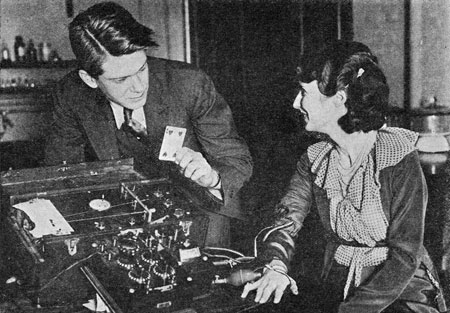 At Stanford in the 1920s, Keeler refined interrogation techniques such as the card trick, designed to convince subjects he could identify their playing card—even though he often marked the deck, just to make sure. According to family lore, Keeler first met fellow psychology student Katherine (Kay) Applegate (pictured here a few years later) when she beat the card trick by cheating right back. They married in 1930 in Chicago.
At Stanford in the 1920s, Keeler refined interrogation techniques such as the card trick, designed to convince subjects he could identify their playing card—even though he often marked the deck, just to make sure. According to family lore, Keeler first met fellow psychology student Katherine (Kay) Applegate (pictured here a few years later) when she beat the card trick by cheating right back. They married in 1930 in Chicago.

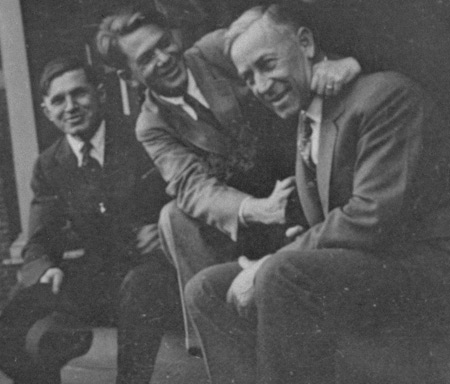 By 1930, Larson, Keeler, and Vollmer had all moved to Chicago, America’s capital of crime. Larson (right) arrived in 1923 to study criminal psychopathology at the Institute for Juvenile Research. Keeler (middle) followed in 1929 and was soon hired by Northwestern University’s Scientific Crime Detection Laboratory, the nation’s first forensic lab. And Vollmer (left) came in 1930 to teach police science at the University of Chicago. His sudden departure ended his disciples’ collaboration. [You may not recopy this image which is the property of the Bancroft Library; please contact them for rights.]
By 1930, Larson, Keeler, and Vollmer had all moved to Chicago, America’s capital of crime. Larson (right) arrived in 1923 to study criminal psychopathology at the Institute for Juvenile Research. Keeler (middle) followed in 1929 and was soon hired by Northwestern University’s Scientific Crime Detection Laboratory, the nation’s first forensic lab. And Vollmer (left) came in 1930 to teach police science at the University of Chicago. His sudden departure ended his disciples’ collaboration. [You may not recopy this image which is the property of the Bancroft Library; please contact them for rights.]

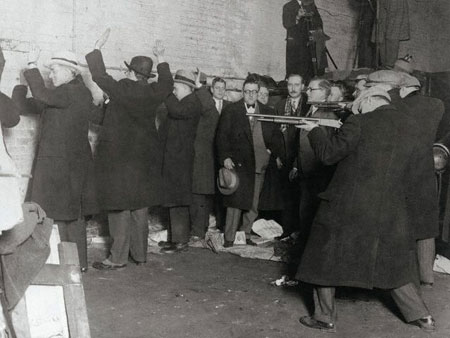 The Northwestern University Scientific Crime Detection Laboratory was the nation’s first forensic lab, founded in the wake of the St. Valentine’s Day massacre. This reenactment of the massacre by the investigating Grand Jury includes the jury foreman, Burt Massee, who provided the initial funding for the lab. Under the tutelage of Northwestern Law School dean, John Henry Wigmore, Massee decided that the lab had to be run by a university so as to remain beyond the reach of Chicago municipal corruption. (Massee is the first person on the left who is facing the camera.) The Northwestern University Scientific Crime Detection Laboratory was the nation’s first forensic lab, founded in the wake of the St. Valentine’s Day massacre. This reenactment of the massacre by the investigating Grand Jury includes the jury foreman, Burt Massee, who provided the initial funding for the lab. Under the tutelage of Northwestern Law School dean, John Henry Wigmore, Massee decided that the lab had to be run by a university so as to remain beyond the reach of Chicago municipal corruption. (Massee is the first person on the left who is facing the camera.)

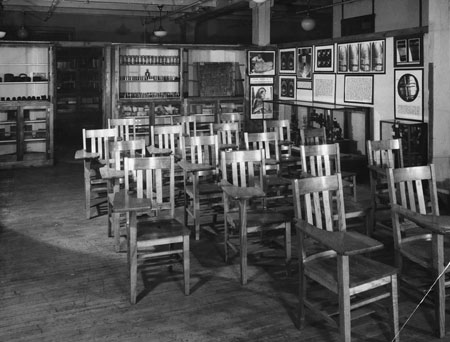 The Northwestern Lab predated the FBI lab by a year and among those trained at its biannual forensic science courses for police investigators and prosecutors was an agent sent by J. Edgar Hoover, and a young cartoonist named Chester Gould who created the cartoon character Dick Tracy. By 1937 the crime lab, which had been losing money despite Keeler’s efforts, was sold to the city of Chicago to become the police department’s forensic lab. The Chicago police refused to let Keeler and his wife stay on with the lab. The Northwestern Lab predated the FBI lab by a year and among those trained at its biannual forensic science courses for police investigators and prosecutors was an agent sent by J. Edgar Hoover, and a young cartoonist named Chester Gould who created the cartoon character Dick Tracy. By 1937 the crime lab, which had been losing money despite Keeler’s efforts, was sold to the city of Chicago to become the police department’s forensic lab. The Chicago police refused to let Keeler and his wife stay on with the lab.

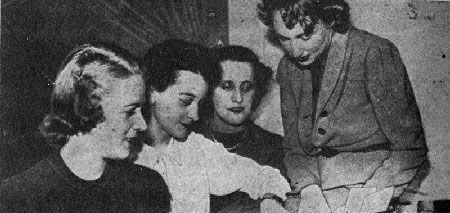 During the 1930s, Katherine (Kay) Keeler trained as a forensic sleuth, becoming the nation’s first female handwriting analyst. After the lab was disbanded, she established her own all-woman’s detective agency in Chicago, specializing in forensic investigation. Soon after, she left Keeler for another man, and during WWII joined the WASPS (Women’s Auxiliary Service Pilots). She died in 1944 near Patterson Field in Ohio while flying solo across the country to help halt the disbanding of the WASPs. During the 1930s, Katherine (Kay) Keeler trained as a forensic sleuth, becoming the nation’s first female handwriting analyst. After the lab was disbanded, she established her own all-woman’s detective agency in Chicago, specializing in forensic investigation. Soon after, she left Keeler for another man, and during WWII joined the WASPS (Women’s Auxiliary Service Pilots). She died in 1944 near Patterson Field in Ohio while flying solo across the country to help halt the disbanding of the WASPs.

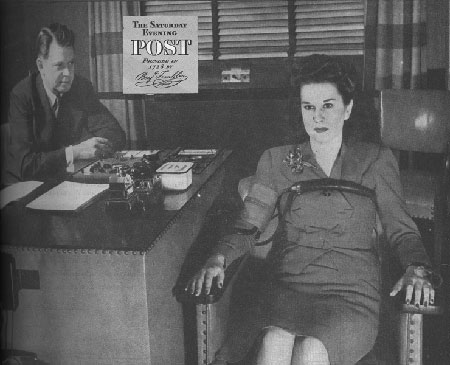 Keeler was devastated by his wife’s betrayal and death. In the aftermath of World War II he put his lie detector into service rooting out traitors among German POWs and protecting America’s nuclear secrets at Oak Ridge, Tennessee. At the same time, Keeler won great public fame by putting his lie detector to work exonerating accused men and women; one offshoot of this effort was his chance to himself in the Fox Pictures release, Call Northside 777 (1948). In 1949, at the age of 45, he died of a stroke exacerbated by alcohol, cigarettes, and mistrust. Keeler was devastated by his wife’s betrayal and death. In the aftermath of World War II he put his lie detector into service rooting out traitors among German POWs and protecting America’s nuclear secrets at Oak Ridge, Tennessee. At the same time, Keeler won great public fame by putting his lie detector to work exonerating accused men and women; one offshoot of this effort was his chance to himself in the Fox Pictures release, Call Northside 777 (1948). In 1949, at the age of 45, he died of a stroke exacerbated by alcohol, cigarettes, and mistrust.
|